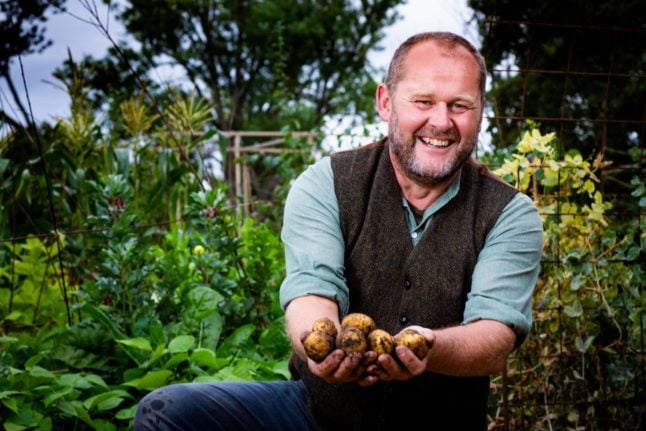Going out to enjoy a meal and drink can be a very enjoyable experience, offering the chance to unwind and socialise. However, eating out or just going out for a beer can be expensive. Here are some of the more affordable bars and restaurants in Stockholm.
Hellströms
Hellströms Bar and Restaurant has a snug and welcoming atmosphere. They offer meals such as sandwiches, salads and burgers. They also have weekly offers, pasta nights on Monday and Tuesday nights, a fajita buffet on Wednesdays, burger and fries offer on Thursdays and a nacho buffet on Fridays.
Along with meal deals during the week they also have club 90, with music from the 90s from 8pm-1am on Wednesday night, a music quiz every Thursday and a pre-party from 10pm on Saturday. Finally, their afterwork promotion takes place every weekday between 3pm and 8pm.
The price of beer starts from 30 kronor ($2.90).
Find out more about their events here.
Location: Fatbursgatan 1, Stockholm
Crazy Horse and Black Elk
With three venues across Stockholm, the Crazy Horse is a lively and bustling bar. They offer a wide range of menu options, from snacks to burgers, fajitas, salads, fish and grilled dishes. It can get busy, so bear that in mind.
The cost of beer starts from 32 kronor, before 6pm.
More information can be found here.
Location: Sveavägen 60 & 61 and Götgatan 44, Stockholm
Lion Bar
This bar has a friendly and laid-back environment. With five locations in Stockholm, Sundbyberg, Vasastan, Sveavägen, Gärdet and Hornstull they feature a curated selection of dishes, which include fish and pork to burgers and steak. The post-work offer is available until 7pm from Monday to Friday.
Beer starts from 32 kronor, before 7pm.
More information can be found here.
Location: Tulegatan 7, Roslagsgatan 20, Sveavägen 74, Furusundsgatan 20 and Hornsgatan 154, Stockholm
The International Bar
Located in Östermalm, Gamla Stan and Birkastan, the International Bar is another favoured venue. The bar can be noisy, but it is a welcoming environment. Like many other bars, it has a broad food menu to choose from, which includes Swedish meatballs, fish and chips, burgers and pizzas.
They also have afterwork reduced rates from Monday to Friday between 3pm and 7pm. The bars also show sporting events, such as the Premier and Champions Leagues.
Cost of beer starts from 39 kronor.
Additional information can be found here.
Location: Norrlandsgatan 23, Mälartorget 13 and Rörstrandsgatan 11 Stockholm
Bara Enkelt & Bara Backe
The Baras group has eight venues across Stockholm and Uppsala, with Bara Enkelt and Bara Backe being popular spots.
The atmosphere in these bars is energetic and vibrant, especially on the weekend. Both bars offer a food menu, which includes snacks such as fries and halloumi sticks along with mains, including burgers and pasta dishes. Afterwork discounted prices are offered every day until 5pm.
Draft beer starts from 42 kronor.
Book a table or find more information here.
Location: Skånegatan 59 and Götgatan 33, Stockholm
Retro Bar
Another popular sports bar with a television screen at every corner, so you won’t miss any of the action. With an American-inspired food menu, they serve a range of burgers, stakes, pasta dishes, fajitas and salads. Their afterwork promotion is on until 6pm from Monday to Friday. When it comes to sports, they show matches from the Premier and Champions League to the NFL and more.
The cost of a beer starts from 54 kronor.
Book a table or find more information here.
Location: Sveavägen 120, Sveavägen 55, Sankt Eriksgatan 22, Hornsgatan 136 and Bondegatan 25, Stockholm
Flying Horse
If you are looking for a bar to watch football, the Flying Horse is a popular sports bar. When a football match is being screened, this bar has an exciting and dynamic atmosphere, offering a wide selection of food, from light bits, like sandwiches to main meals which includes burgers, fish, chicken and salads. The pub offers discounted prices on drinks for their afterwork deal from Monday to Friday until 6pm.
Due to the venue being a popular sports bar and it does fill up quickly, if you are planning on going it is recommended that you book in advance.
The cost of beer starts from 59 kronor.
Get more information on this bar here.
Location: Odengatan 44, Stockholm




 Please whitelist us to continue reading.
Please whitelist us to continue reading.
Member comments